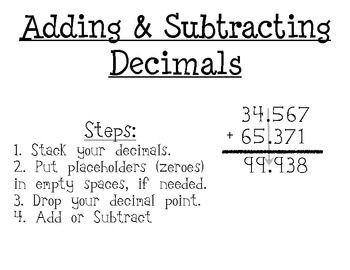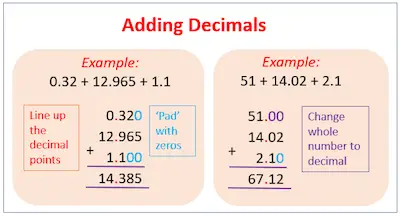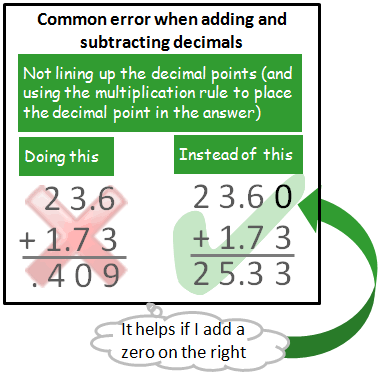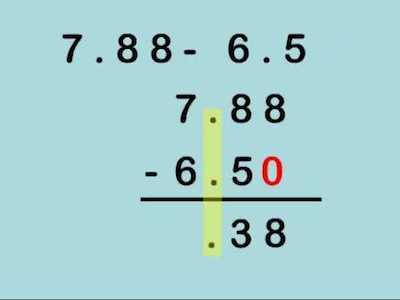Many students tend to stop when they see that they need to add or subtract decimals. While they can add or subtract whole numbers without any problems, they are simply afraid and don’t know what to do or how to proceed when they see a decimal point. So, today, we decided to show you how you can start adding and subtracting decimals without any problems.
Looking to know more about rounding numbers?

Ultimately, you just need to keep in mind that in what concern adding and subtracting decimals, the same rules apply as to when you need to add or subtract whole numbers.
Adding Decimals
When you need to add decimals, you just need to follow the next steps:
Step #1: Write down the decimal numbers, one number under the other number, and line up the decimal points.
Step #2: Convert the given decimals to like decimals.

Step #3: Arrange the addends in such a way that the digits of the same place are in the same column.
Step #4: Add the numbers from the right as we carry addition usually.
Step #5: Remember to place the decimal point down in the answer in the same place as the numbers above it.
Discover the rules to round numbers.
Here’s a practical example:

Let’s say that you want to add the decimals 1.83, 21.105, 236.8, and 0.9.
As you can see, we have unlike decimals here that we need to first convert to like decimals to make the addition simpler. This way, you will get:
1.830 + 21.105 + 236.800 + 0.900
Arranging the addends in columns and on adding we get:
1 . 8 3 0
2 1 . 1 0 5
2 3 6 . 8 0 0
+ 0 . 9 0 0
________________
2 6 0 . 6 3 5
This is how you read decimals.
Here’s another example. Let’s say that you want to add the following decimals: 7.39, 65.007, 213.8 and 91.2.
Again, you have unlike decimals that you will need to convert into like decimals to make the addition simpler. This way, you will get:
7.390 + 65.007 + 213.800 + 91.200
Arranging the addends in columns and on adding we get:
7 . 3 9 0
6 5 . 0 0 7
2 1 3 . 8 0 0
+ 9 1 . 2 0 0
________________
3 7 7 . 3 9 7
Subtracting Decimals

When you need to subtract decimals, you just need to follow the next steps:
Step #1: Write down the two decimal numbers, one number under the other number, and line up the decimal points.
Step #2: Convert the given decimals to like decimals.
Step #3: Write the smaller decimal number under the larger decimal number in the column.
Step #4: Arrange the decimal numbers in the column in such a way that the digits of the same place are in the same column.
Step #5: Subtract the numbers in the column from the right.
Step #6: Remember to place the decimal point down in the answer in the same place as the numbers above it.
Discover how to round decimals to the nearest whole number.
Here’s a practical example:
Let’s say that you want to subtract 27.59 from 31.4.
As you can see, the first thing that you need to do is to convert both the decimal numbers into like decimals. This way, you will get:
31.40 – 27.59
Now arrange them in columns and subtract we get:
3 1 . 4 0
– 2 7 . 5 9
__________________
3 . 8 1